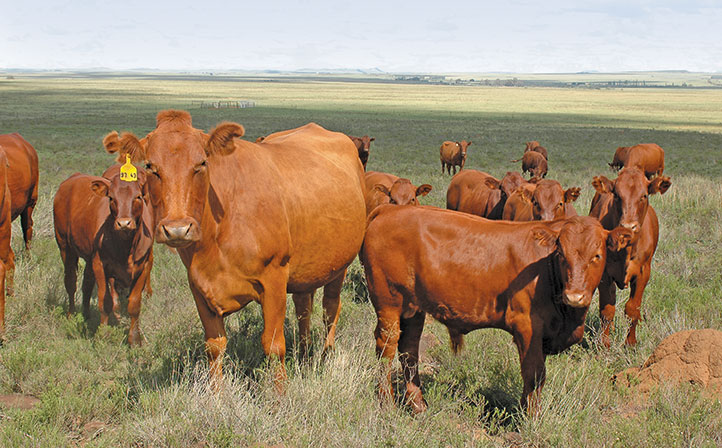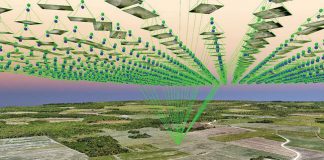
Photo: FW Archive
Cattle production has been practised in Europe and Africa for centuries. And just as cattle farming methods have changed over this time, so has the manner in which cattle are butchered.
Although records show that beef cuts were traded and served as far back as the 17th century, the practice of dividing the carcass into the formal cuts of beef that we know today first appeared about two centuries ago.
It is only since the late 19th century that abattoirs have been compelled to follow specific stunning and slaughter methods to address the problem of cruelty.
One of the first campaigners in this respect was Benjamin Ward Richardson, a physician and anaesthetist who, in 1853, designed a lethal gas chamber for animals.
In 1911, the British Council of Justice to Animals was established to improve the slaughter of livestock. Modern methods, such as the captive bolt pistol and electric tongs, were introduced in the 1930s.
Beef cuts
Beef cuts and the names used for them vary from one country to another. Sometimes, the same name is used for a different cut; for example, the brisket in the UK and South Africa is different to the US brisket.
The cooking method and occasion usually determines which beef cut is appropriate. At a South African braai, for example, you will be served a steak rather than a piece of brisket, which has to be cooked slowly to make it tender.
The cuts served in restaurants always tend to be the premium cuts, which can earn much better prices. This has long been the case. In London, from the late 1600s, for example, chophouses (steakhouses) usually served quality individual portions of meat only to men!
Comparing beef prices
Today, the price of beef is determined as much by where you are in the world as by the cut you are buying. For example, a factor such as the animal health status of a country, as determined by the World Organisation for Animal Health, can have a major influence on beef prices.
Many African countries cannot export their beef due to the animal health status in certain production areas affected by, for example, contagious bovine pleuropneumonia (CBPP), foot-and-mouth disease and African swine fever.
To offer a clear comparison on prices in Africa and Europe, the average country-specific producer price (the price per kilogram for dressed beef) of 2016/2017 was converted into US$/ kg.
This price multiplied by average cattle weight represents what farmers receive to cover their cost of production, which includes feed, veterinary costs, and transport. Graph 1 shows the difference in producer and retail prices in selected countries.
The producer prices in this graph were derived from only high-quality and health-certified beef; low quality meat and meat originating from animal disease zones were excluded.
Producer prices ranged from US$3,50/kg to US$6/ kg.
This is the price paid for 25 to 35 months of the farmers’ involvement; that is, from mating the cow to the date of slaughter of the long weaner.
From here, the price accelerates to the average retail price, known as the beef retail price/ kg, of between US$4/ kg and US$17/kg.
As the retail price differs between cuts, the weighted average between low, medium and high beef price cuts was used to derive the presented average beef retail price/kg.
It is interesting to observe that, in some cases, the margin between producer and retail prices is small, while in other cases, such as Norway, for example, the margin is substantial.
The beef retail price in Norway is known to be the highest in the European zone, whereas the beef retail price in Germany is at the lower end of all the EU countries.
It should be noted that countries’ situations differ; Botswana and Namibia export beef, for example, while South Africa and several European countries import significant quantities of beef to be processed for local and further export demand.
To further illustrate this, consider that beef from Botswana, with an average producer price of US$3,14/ kg, will end up on retail shelves in Norway for an average price of US$17,13/ kg.
As seen in Graph 2, it could even be served in a restaurant for as much as US$93,93/kg.
The restaurant price for the most expensive cuts can go up to US$179/ kg for fillet!
The price increase from retail to the restaurant is significant in all countries. However, one should keep in mind that restaurants usually offer only the best premium beef cuts. Graph 2 shows what restaurants can demand for specific dishes on their menu.
The price of the fillet cut was used as a reference to compare the derived average restaurant prices with the beef producer and retail prices mentioned. Fillet is priced between double to three times more than the average beef price.
Fair pricing
The difference in price clearly shows that the Southern African beef industry could benefit from increasing exports of certain high-value beef cuts to Europe.
In order to penetrate these markets, however, Southern African beef-producing countries would have to adhere to trading requirements such as health and traceability.
Having met these requirements, Southern African beef exporters are bound to be rewarded for the good-quality beef they produce, with superior revenues coming from countries such as Norway.
This would provide an incentive to farmers to improve their husbandry practices and would generate multiplier effects in the economy.
The retail price for beef on Norwegian shelves is 30 times more than what the farmer in Botswana or Namibia would receive.
The pricing system
The current pricing system is based on the aggregated carcass value, and not on a system that would optimise the revenue of a carcass by selling cuts to various destinations.
It is, therefore, important for local beef producers to lobby for an adjusted price system that moves away from aggregation towards a system that reflects the actual value of produce delivered to the abattoir. Such an adjustment would mean that beef producers who entertain appropriate practices would be compensated for their superior beef.
All price conversions were done in September 2017 and reflect exchange rates at the time.
Email Dr Von Bach at [email protected].











